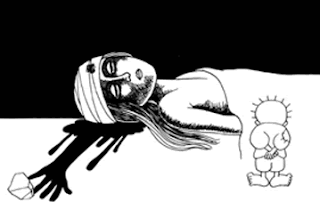ABOUT NAJI AL-ALI
Naji Al-Ali was born in 1936 in the Palestinianvillage of Ash Shajara Palestine Palestine to Ein
Al-Hilweh refugee camp in Lebanon
Naji Al-Ali was born in 1936 in the Palestinian
Naji Al-Ali
grew up to become perhaps the most popular cartoonist in the Arab world. With
brutal honesty, Naji Al-Ali analyzed the relationships between the governments
of the United States , Israel Japan
Naji Al-Ali
was well loved for his work but was also well hated, as illustrated by the many
death threats he and his family received. On July 22, 1987, in London
Naji Al-Ali
was killed as the Intifada in the West Bank
and Gaza Strip was beginning. To this day, Naji Al-Ali’s searing cartoons, seen
through the eyes of the refugee boy named Handala, continue to be used over and
over again.
Naji Al-Ali
was one of the most prominent cartoonists in the Arab world. Sarcastic,
poignant and perhaps too bold, Al Ali's cartoons were drawn from his experience
as a Palestinian refugee since childhood and clearly reflected his political
stance, which was often critical of the Arab regimes. The following extracts
are drawn from an interview with Radwa Ashour, novelist and professor of
English literature at Ain Shams University ,
during the summer of 1984 in Budapest ,
Hungary London











































